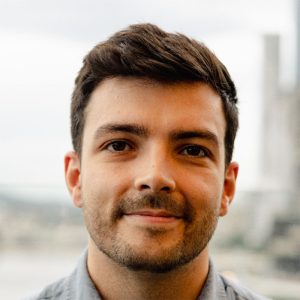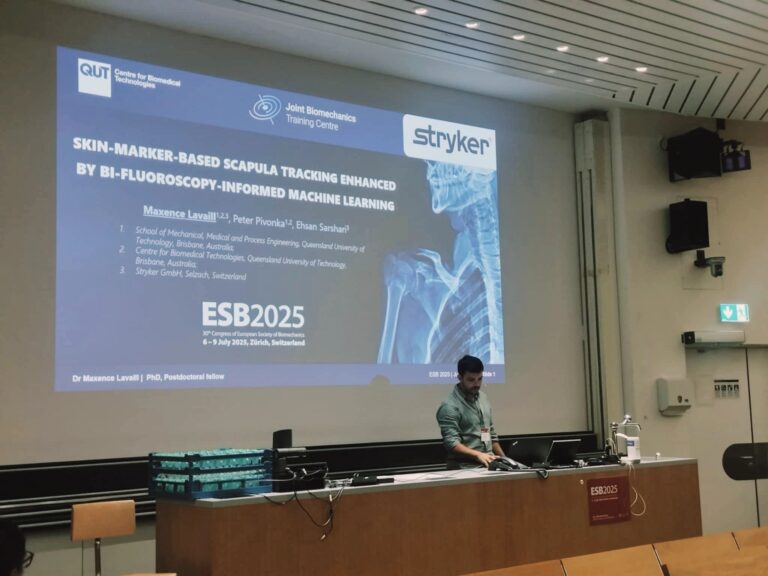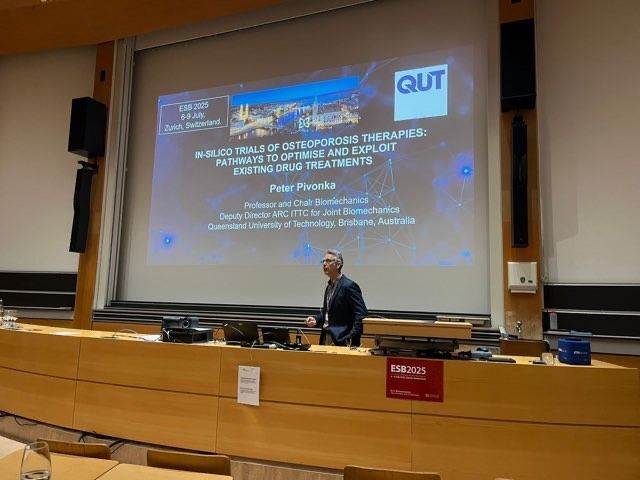
Advancing Non-Invasive Scapular Tracking
In July 2025, the Australian Research Council Industrial Transformation Training Centre for Joint Biomechanics underscored its dedication to tackling critical challenges in musculoskeletal research at the European Society of Biomechanics Congress in Zurich. Dr Maxence Lavaill delivered an impactful presentation entitled “Skin-Marker-Based Scapula Tracking Enhanced by Bi-Fluoroscopy-Informed Machine Learning,” confronting one of shoulder biomechanics’ longest-standing obstacles: accurately measuring the scapula’s complex three-dimensional motion through layers of soft tissue.
Conventional videogrammetry setups using skin markers can err by as much as 80 mm in position and 25° in orientation, while dynamic bi-fluoroscopy bypasses soft tissues but remains prohibitively expensive and reliant on ionising radiation. Dr Lavaill’s work leverages a recently published dataset in which twenty healthy volunteers performed seven shoulder movements—coronal and scapular abduction, forward flexion, two internal rotations, and two external rotations—while ten thoracic, scapular, upper arm, and forearm landmarks were tracked by a ten-camera Vicon system and five scapular landmarks were captured at 100 Hz via a custom bi-fluoroscopy rig.
Employing demographics (sex, age, height, weight), motion type, shoulder side and a sliding window of three-dimensional marker coordinates across four preceding frames, the study constructed 105 predictors to anticipate 15 ground-truth fluoroscopic landmark coordinates over 101,936 motion frames. Sixteen participants’ data trained ensemble-bagged-trees regression models in MATLAB’s Regression Learner App, with the remaining four reserved for validation. Predicted marker trajectories were then filtered to ensure temporal continuity and benchmarked against raw skin-marker errors.

Demonstrable Improvements and Clinical Promise
The machine-learning models consistently diminished tracking errors, achieving landmark accuracies between 4 and 14 mm—up to a 70 percent reduction compared to conventional skin markers. Scapular orientation errors fell from an average of [− 0.4, 10.1, − 10.2]° using Vicon landmarks to [− 2.7, 4.1, 4.5]° after ML correction, aligning performance far closer to fluoroscopy’s precision without associated drawbacks. As Dr Lavaill remarked, “This research tackles one of shoulder biomechanics’ trickiest challenges—accurately tracking scapular motion non-invasively. By integrating skin-marker data with the precision of bi-planar fluoroscopy through machine learning, we’re pushing boundaries in motion analysis, sports science, and clinical diagnostics.”
Expanding Computational Trials in Bone Therapies
Deputy Centre Director Professor Peter Pivonka complemented this work with his lecture, “In-Silico Trials of Osteoporosis Therapies: Pathways to Optimise and Exploit Existing Drug Treatments.” He outlined how high-fidelity bone-remodelling models can simulate virtual patient cohorts to predict dosing regimens, assess long-term outcomes and refine therapeutic strategies—presenting an urgent alternative to costly early-phase clinical trials. Together, these presentations underscored the ESB Congress’s core focus on bridging experimental and computational modelling to solve biomechanical complexities.

The Imperative of Scientific Exchange
For Dr Lavaill, engagement at international congresses is central to scientific advancement. Presenting six months of data at the Congress allowed for solicitation of peer feedback on the open-source model, and it gauged the interest from academic and industry delegates, identifying colleagues whose insights might drive subsequent software refinements. He has already earmarked the International Society of Biomechanics Congress later this year and the 2026 World Congress of Biomechanics in Canada as critical venues for wider validation, integration with wearable sensor platforms, and exploration of population-specific adaptations. However the focus on modelling as explored in the ESB Congress is the most closely aligned with Dr Lavaill’s research.
Forging Global Partnerships
Building on dialogues initiated in Zurich, Dr Lavaill will embark on collaborative studies in the United States and in Switzerland. These strategic collaborations not only deepen the ARC ITTC for Joint Biomechanics’ international footprint but also affirm its mission to translate computational and experimental innovations into tangible health solutions.

